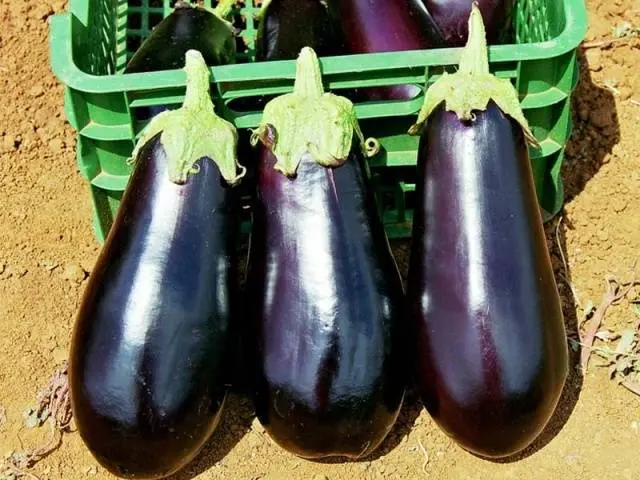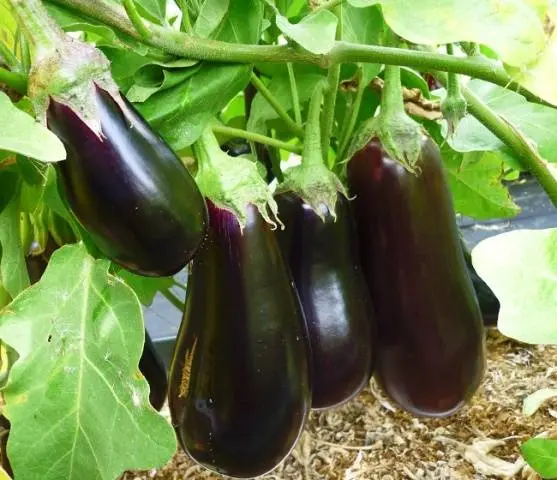Contents
Eggplant is a favorite vegetable of many. It has many beneficial properties, rich in vitamins, minerals and fiber. There are many options for cooking eggplant. Many people know how to cook them deliciously. But, few people know how to properly grow these vegetables. Consider one of the worthy representatives of eggplant – the variety “Drakosha”.
Using his example, we will see how to properly care for eggplants and what features this species has. And what the fruit itself looks like, you can see in the photo.

Features
Eggplant “Drakosha” refers to early ripe varieties. From the moment of germination to the full ripening of the fruit, it takes from 100 to 120 days. Can be grown outdoors or in greenhouses. The height of the plant can reach up to 1 m. The color of the fruit, like all eggplants, is dark purple, the skin is shiny and smooth. The weight of one fruit is about 300 g, and the length is up to 21 cm. The shape of the fruit is pear-shaped. The variety is disease-resistant, which guarantees a good harvest. Fruits abundantly, especially if grown in a greenhouse. In such conditions, you can collect up to 5 kg of fruit per m2.
The taste is pleasant, there is no bitterness. Suitable for preservation. The variety was bred specifically for growing in adverse conditions. It sprouts and develops even in infertile soil. Does not require complex care. This variety grows and develops quickly. The high yield of eggplant “Drakosha” will allow you to collect a lot of fruits even in a small area.

The variety was bred very carefully, taking into account all possible problems, diseases and bad weather conditions. Therefore, it is ideal for any climate, easily tolerates both strong winds and drought. Eggplant is resistant to most possible diseases. Even with poor exposure to sunlight, this variety will grow and please the eye.
Cultivation
The last weeks of February, the beginning of March is an excellent time for sowing seeds. When one or two leaves appear on the stems, you can start picking. Seedlings can be planted in the greenhouse already in mid-May, and in open soil – not earlier than the beginning of June. In June, it will be necessary to remove underdeveloped ovaries and flowers from plants, and leave only 5–6 of the largest and strongest.

Tips for growing:
- you need to choose only high-quality seeds. It’s not worth saving on this so that you don’t pay twice later if your eggplants don’t grow;
- it is worth taking a responsible approach to the choice of a site for growing eggplant. They do not tolerate neighborhood with other representatives of nightshade crops;
- so that the seedlings are not lethargic, use containers of the correct shape and size. The plant may simply not survive in a cramped, or, conversely, too large dish;
- do not forget to treat the seeds before sowing. This will protect the plant itself and everything that will grow around from infections;
- plant seedlings on time. Eggplants need time to settle into the new soil and begin to develop, so do not delay transplanting. For accuracy, use the information on the packaging.










